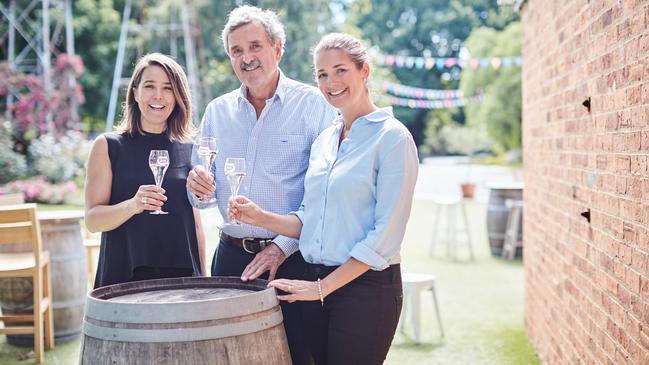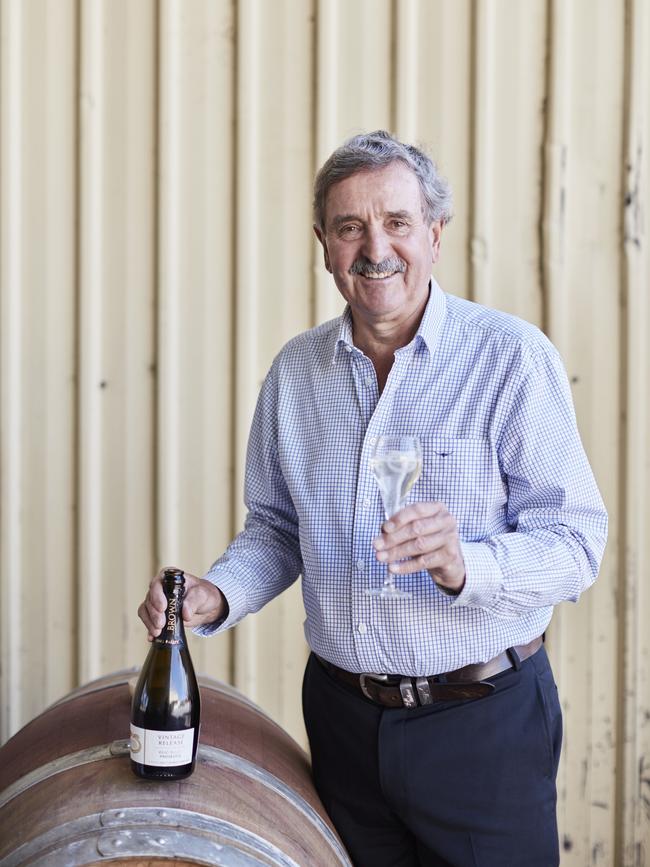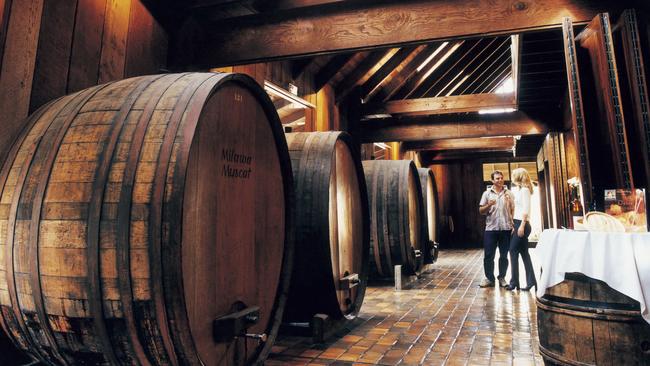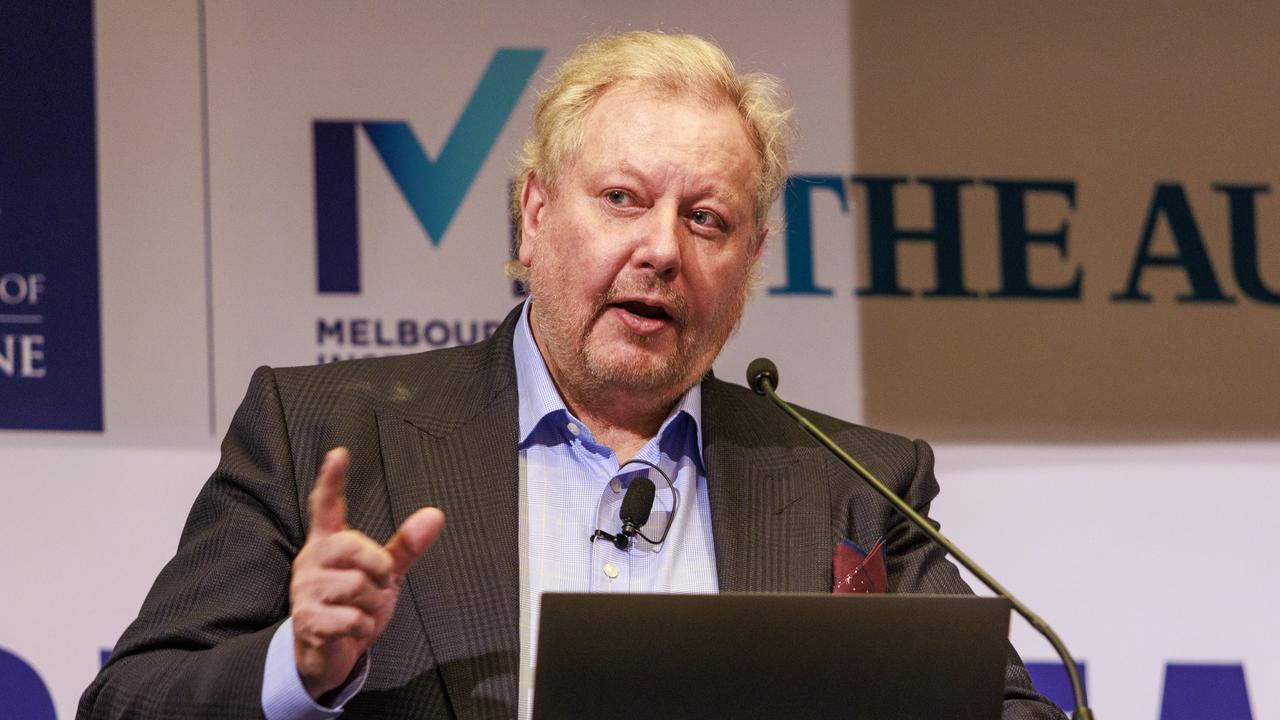China and other export markets key to wine industry: Ross Brown
Brown Family Wine Group executive director Ross Brown, who has been recognised in this year’s Australia Day honours list, says export markets are key for the Australian wine industry.

The future of Australia’s wine industry lies in its capacity to tap into global export markets, according to the executive director of Brown Family Wine Group, Ross Brown.
“We have to make sure we get those export markets working,” Brown told The Australian from his family property in Milawa, in northern Victoria.
A third generation Australian wine maker, Brown’s $100m family wine business was hit by the tariffs imposed by China on Australian wines in 2020 as a result of political tensions between Australia and China.
But Brown, who was awarded a Member of the Order of Australia (AM) in the Australia Day honours for his services to wine making and tourism, sees the future of his business and the Australian wine industry in general in re-establishing a presence in China, as well as looking for new markets in Asia, the UK and the US.

“The imposition of tariffs four years ago put half of the total Australian exports of wine back into the domestic market,” he said.
“It was about $1bn of wine which created an oversupply in the Australian wine market which put the industry in the tough position it is in at the moment.
“But now China has re-opened, and Australia has also sought out other export markets.”
The Brown Family Wine Group dates back to 1885, when Brown’s grandfather, John Brown, first planted vines in the area, 10km south of Wangaratta, producing its first vintage of wines in 1889.
The company specialises in riesling, muscat and shiraz grapes, but has been expanding into prosecco in the King Valley area in Victoria and pinot noir from properties in Tasmania.
Brown said the wine business in Australia was still “in a pretty tough spot” due to oversupply, but that was s changing as Australian wine makers were returning to the China market since the tariffs were dropped in March last year.
“We are starting to see a turnaround, but these things don’t happen overnight,” he said.
The Brown group had been exporting to China for a decade before the tariffs were imposed.
“We had a considerable impact from the decision to kick Australia out of the wine market,” Brown said.
But he said the company’s decision to keep staff in China despite the shutdown was now paying off as it re-entered the market.
While some believe the Chinese market will not come back to the same extent for Australian wine makers, Brown said he believed it was Australian wine makers that helped promote the category before the tariffs were imposed, and they had the capacity to revive the market now they were coming back.
“The whole category [of wine in China] declined when Australian wine was shut out of the market,” he said. “Australia is very good at promoting and developing the wine category. Australian companies helped build the market and it went backwards when they left.”
The Brown group has about 340 staff, mainly in Victoria and Tasmania, with 12 people based overseas, developing its export markets including in Shanghai, Beijing, Singapore the US and Britain.
Brown said he believed it could take 12-18 months for Australian wine makers to get back into the Chinese market in a serious way, but their return could help expand the total category again.
He said there had also been a re-emergence of interest in Australian wine in Britain, with “some green shoots emerging in the US market”.

Brown said co-operation between the family wine companies in Australia was one of the keys to success in export markets.
He was chair from 2010 to 2012 of Australia’s First Families of Wine, a group of family-owned wine companies working together to promote Australian wine in the global market. “If one of us goes to the UK and wants to show our wines we might get a half-hearted response, but if we can say we have 12 wine makers who can show their product, we can get more attention,” he said.
He calls his approach “co-opetition” – co-operative competition – with wine companies working together and pooling resources to build the category.
He also sees this happening in the King Valley, where winemakers are getting together to help develop the local prosecco industry, with the wine now popular in Australia.
“You have to have the mentality where you work with your competitors to collectively build a bigger pie and get a bigger share of the market,” he said.
“In tourism, particularly rural tourism, you have to be able to create a bigger tapestry than just having a single business.
“Most people want to focus on their own business and make it successful, but my view is that there are areas of business where you can work with your competitors and build a bigger pie for everyone.”
Brown said wine makers needed to be attuned to the changing consumer tastes, which were moving towards lighter wine and away from some of the heavier Australian reds.
He said drinkers in the new markets in Asia were preferring a more fruity wine, such as moscato. “When someone’s coming into wine, they are not necessarily going to come in through cabernet, they are going to come through something with a taste which is a bit more soft and fruity,” he said.
“Moscato has been quite a champion in that space.”
Brown has been in the family business since 1970, working his way up from employee, to chief marketing officer, to chief executive from 2001 to 2011, and then moving into his current role as executive director.
His other industry roles have included being a board member of Wine Victoria, an advisory board member of Victorian Regional Tourism, a member of the Victorian Wine Tourism Council, and a committee member of the Australian Wine Federation.
After a lifetime in the wine industry, Brown said the agricultural sector was used to dealing with big cyclical shifts, including the boom in the wine business when it was exporting more than $1bn a year to China, to the oversupply situation in recent years.
“It’s not unusual for us to see this boom-bust scenario in any agricultural industry,” he said.
“You have to have the vision of how you are going to improve things and how you are going to get back on top of things.”
The Australia Day Honours this year also saw another member of the wine industry, Alister Purbrick, awarded an AM for his service to the wine industry.
Mr Purbrick was chief executive of the Tahbilk Group from 1980 to 2011 and has been a director of the company since 1980.
He is also vice-president of Australian Grape and Wine and was president of the organisation from 1999 to 2001.






To join the conversation, please log in. Don't have an account? Register
Join the conversation, you are commenting as Logout